Top 10 Largest & Busiest Ports in the US
Sea freight, one of the oldest means of transport and shipping methods through the ages, has since played an indispensable role in global transportation. The ... read more...world becomes increasingly interconnected thanks to rising goods exchanges and import-export activities with international ports serving as a key function to join economies together. This article lists some of the Biggest Harbours In America.
-
Also known as America’s Port, the Port of Los Angeles is the largest port in North America. Spread over 7500 acres, it handles 20 percent of all incoming cargo for the United States. Its container volume was 9.3 million twenty-foot equivalent units (TEU) in 2019, a 5.5 percent increase over the 8.8 million TEU from 2018. It covers 7,500 acres (3,000 hectares) of land and water and 43 miles (69 km) of the coast and is adjacent to the separate port of Long Beach. The ports are located in San Pedro in Los Angeles, about 32 kilometers south of the city center, and in San Pedro Bay in the Wilmington area.
Port of Los Angeles employs 529,000 people in five counties and 1.6 million people worldwide. Ports of cargo make up about 20% of all cargo entering the United States. The port's main imports were furniture, auto parts, clothing, footwear and electronics. In 2019, the port's main exports were waste paper, pet food, scrap metal, and soybeans. According to the Ports Report released in 2020, the main trading partners are China (including Hong Kong), Japan and Vietnam.
Location: Los Angeles, California
TEUs: 9.2 million
Manager & Operator: the Los Angeles Board of Harbor Commissioners
Locode: US LAX
Website: https://www.portoflosangeles.org/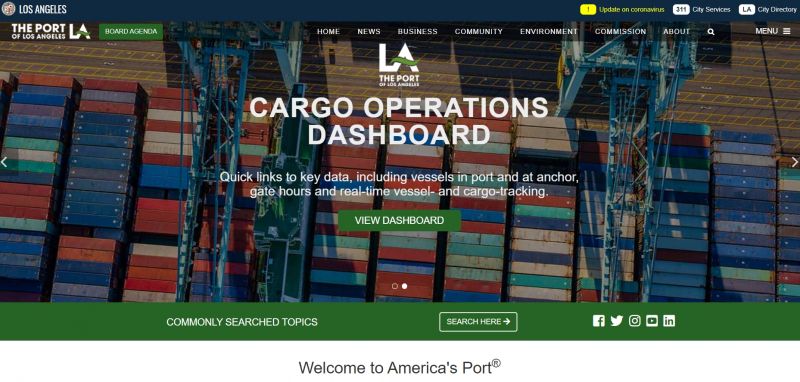
the Port of Los Angeles Website 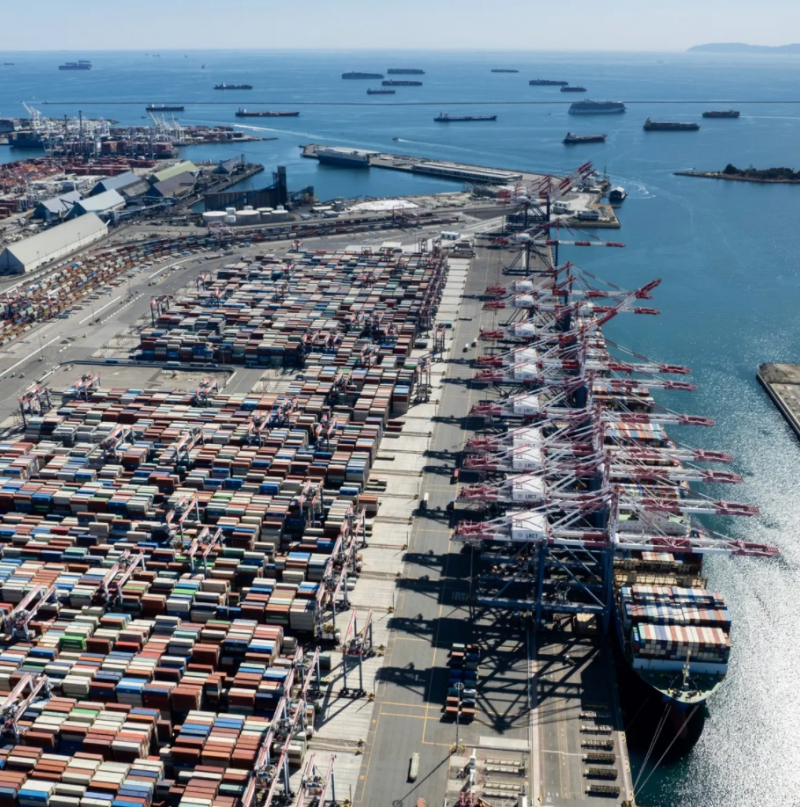
the Port of Los Angeles -
Long Beach Port, also known as the Long Beach Harbor Department, is an American container port adjacent to the Port of Los Angeles. Serving as a major gateway for US-Asian trade, the port includes 3,200 acres (13 km2) of land and 25 miles (40 km) of coastline in Long Beach, California. Long Beach Harbor is located 3 km southwest of downtown Long Beach and 40 km south of downtown Los Angeles. The port brings in about $100 billion in trade annually and employs more than 316,000 people in Southern California.
Being the second biggest port, the Port of Long Beach is less than 30 kilometers from the Los Angeles Port. Founded in 1911, it’s today one of the biggest gateways for trade between Asia and North America. The Long Beach Port was one of the first to adopt eco-friendly policies to reduce its impact on the environment, through measures such as the Green Port Policy.
Location: Long Beach, California
TEUs: 8.11 million
Owner: Macquarie Infrastructure Partners
Locode: USLGB
Website: http://www.polb.com/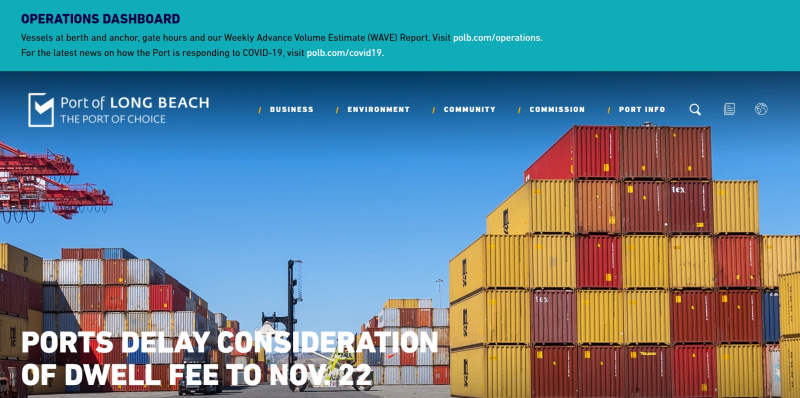
Port of Long Beach Website 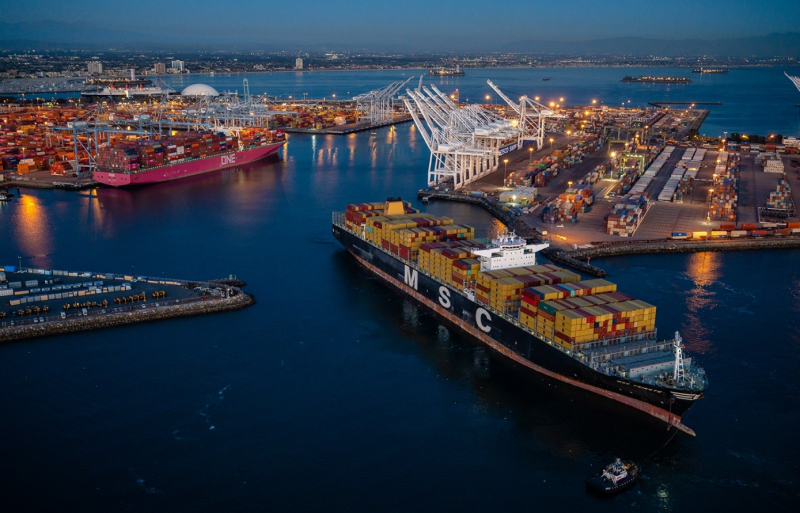
Port of Long Beach -
The Port of New York and New Jersey is the port area of the New York metropolitan area, which includes an area within a radius of approximately 25 miles (40 km) of the Statue of Liberty National Monument. This includes the New York-New Jersey port estuary navigation waterway system running more than 770 miles (1,240 km) of coastline around New York and northeastern New Jersey, and support for regional airport, rail and road distribution networks.
The New York and New Jersey Port is the biggest port on the East Coast, receiving 72 percent of the first port of calls. Encompassing waterways in the New York-New Jersey Estuary, the port has two foreign-trade zones in it. Also, considered one of the largest natural ports in the world, it became the second-largest port in the United States in 2019 and the busiest on the East Coast. This port is the main gateway for international flights and the busiest hub for passenger and cargo air travel. There are two foreign trade zones (FTZs) inside the port.
Location: 70 Hamilton Ave, Brooklyn, NY 11231,
TEUs: 7.59 million
Manager & Operator: updating
Locode: PANYNJ
Website: https://www.panynj.gov/port/en/index.html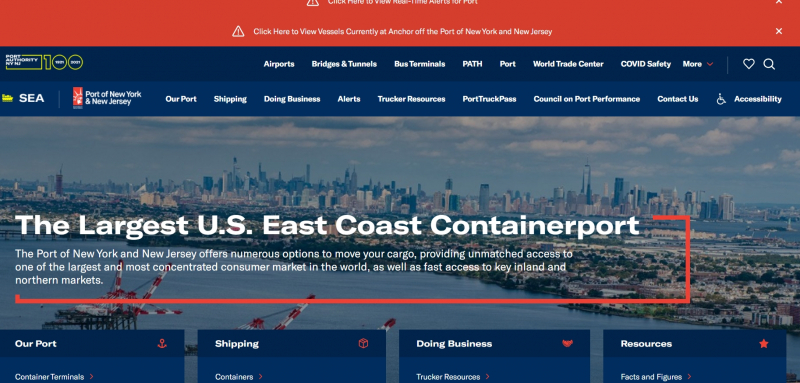
Port of New York and New Jersey Website 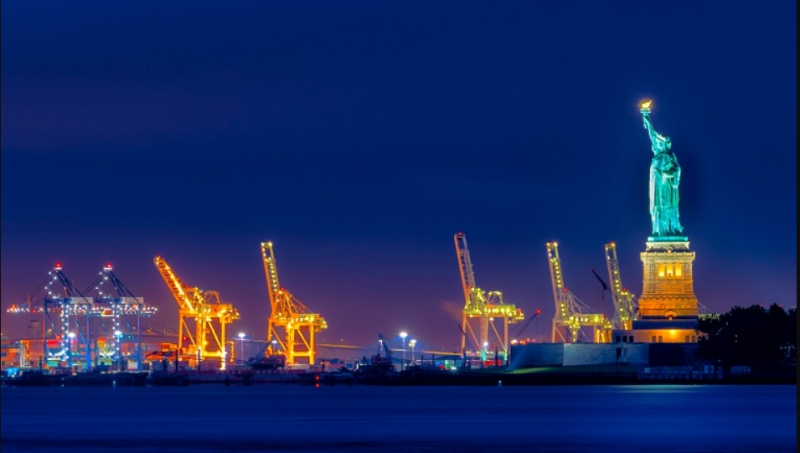
Port of New York and New Jersey -
The Port of Savannah is a major US port located in Savannah, Georgia. As of 2021, it was the fourth busiest port in the United States. Sailing capacity is about 29 km from both sides of the Savannah River and from the Atlantic Ocean. The Port of Savannah, operated by the Georgia Port Authority (GPA), competes primarily with the Port of Charleston in the northeast of Charleston, South Carolina and the Port of Jacksonville in the south of Jacksonville, Florida.
GPA operates another Atlantic port in Georgia, the Port of Brunswick located in Brunswick, Georgia. There are three inland ports connected to the Gulf of Mexico, Fort Bainbridge and Port Columbus, and one is connected to Savannah Harbor by railroad in Cordillera, Georgia.
Two of the four ports in Georgia - Savannah, and Brunswick - when combined, take the fourth spot in our list of the largest ports in North America. The largest single-terminal container facility of the country is in the Port of Savannah, while Brunswick is known as a hub for automobile imports that is used by more than twelve auto manufacturers.
Location: Georgia
TEUs: Port of Savannah : 5.3m & Port of Brunswick: 685,000
Manager & Operator: Georgia Ports Authority
Locode: USSAV & USSSI
Website: https://gaports.com/facilities/port-of-savannah/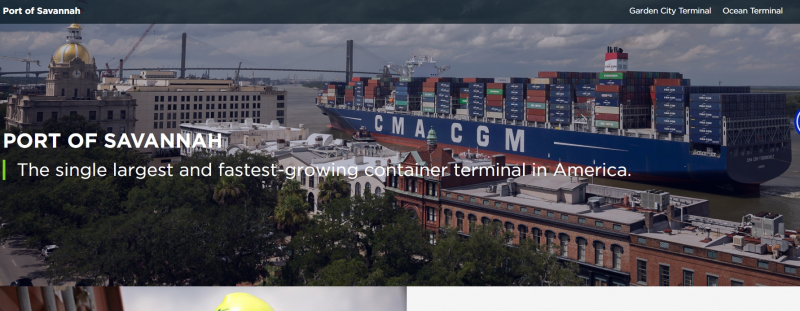
Port of Savannah 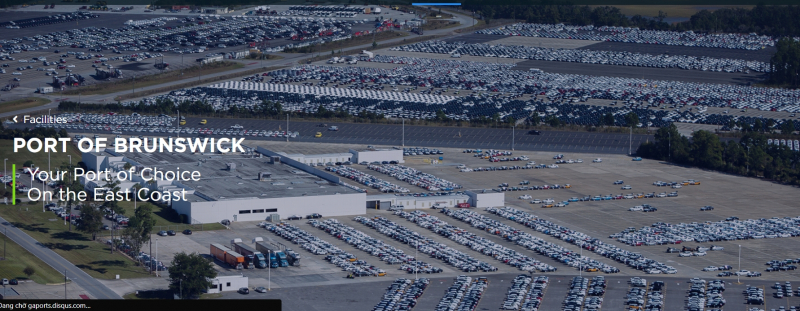
Port of Brunswick -
The Port of Seattle is a government agency overseeing the seaport and airport of Seattle, Washington, United States. With a portfolio of properties ranging from parks and waterfront real estate, to one of the largest airports and container terminals on the West Coast, the Port of Seattle is one of the Pacific Northwest's leading economic engines.
The Port of Tacoma is an independent seaport located in Tacoma, Washington. The port was created by a vote of Pierce County citizens on November 5, 1918. The Edmore was the first ship to call at the port in 1921. The port's marine cargo operations, among the largest in the United States, was merged with the Port of Seattle's in 2015 to form the Northwest Seaport Alliance.
The Port of Seattle-Tacoma is the result of the 2014 merger of the two Washington ports. In 2015, it became the third-largest in terms of cargo handling in America. A significant part of the regional economy, the port did $9.7 billion of business in 2017. To modernize its Terminal 5, the port undertook a $500 million investment in 2019.
Location: Washington.
TEUs: 3.7 million
Owner: updating
Locode: USSEA & USTIW
Website: https://www.portseattle.org/, https://www.portoftacoma.com/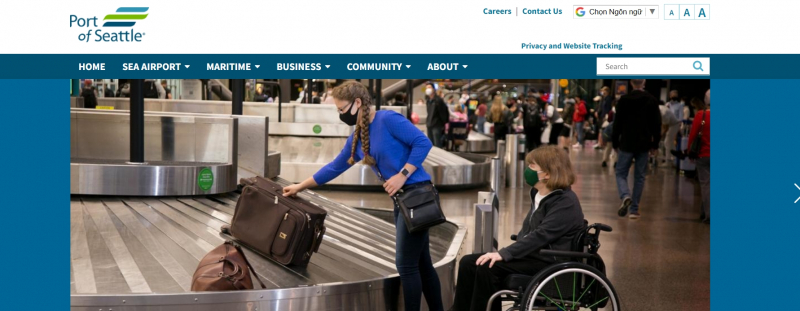
Port of Seattle Website 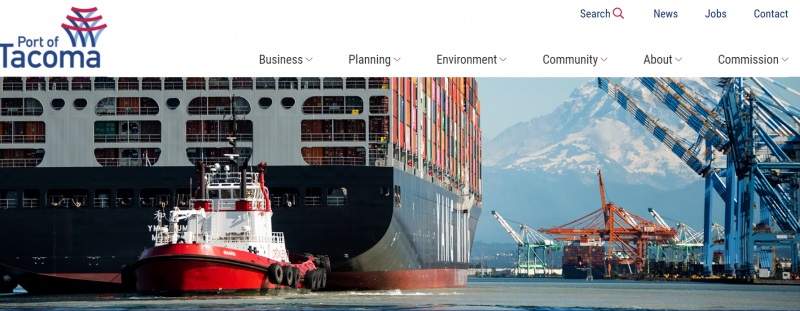
Port of Tacoma Website -
Virginia Port, one of the busiest ports on the East Coast, has grown at an annual rate of 2.6% over five years. As multinational companies like Amazon and Navien set up operations in the state, the port is bound to grow.
Norfolk, Portsmouth, Newport, Virginia International, and Inland Virginia are the main terminals here. Under regulatory approval of the Georgia-Virginia Agreement between the ports of Savannah and Virginia, Virginia Port is expected to benefit significantly from the combined economies of scale.
Location: Virgina
TEUs: 2.85 million
Manager & Operator: The Virginia Port Authority
Locode: USEUV
Website: https://www.portofvirginia.com/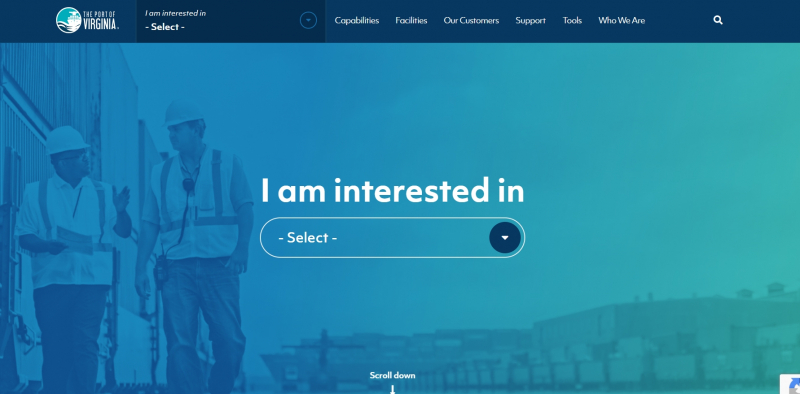
Port of Virginia Website 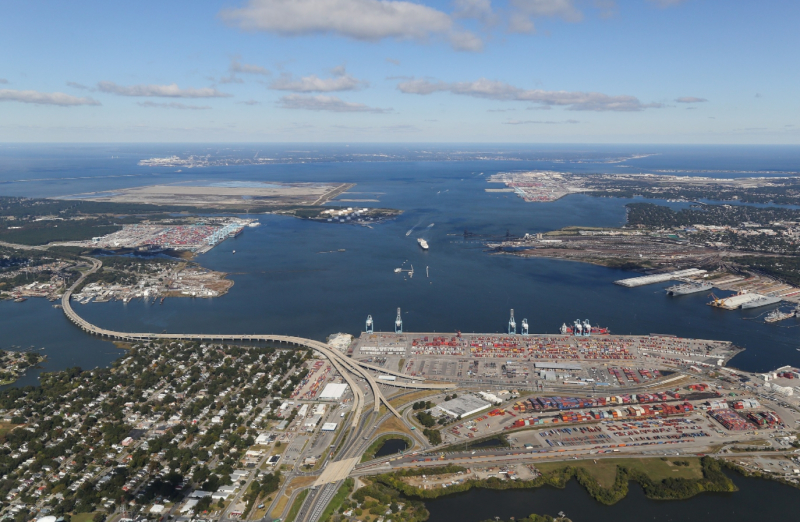
Port of Virginia -
The Port of Houston is one of the largest ports in the world serving the metropolitan area of Houston, Texas. The Port of Houston is the busiest in America. The 50-mile-long port has over 200 public and private terminals. The largest port in the Gulf Coast, the Houston Port handles 52 percent of project cargo among ports in the region. One of its current focus areas is the NeoPanamax expansion.
Port of Houston is a cooperative of more than 150 private companies located along Buffalo and Galveston Bay with the Port Authority, which operates major terminals along the Houston Shipping Canal. Many oil companies have built refineries along the canals, where they are partially protected from the threat of severe storms in the Gulf of Mexico. The petrochemical complex associated with the Port of Houston is one of the largest in the world.
Location: Houston (Texas, USA)
TEUs: 1.6 million
Manager & Operator: the Port of Houston Authority
Locode: USHOU
Website: http://www.portofhouston.com/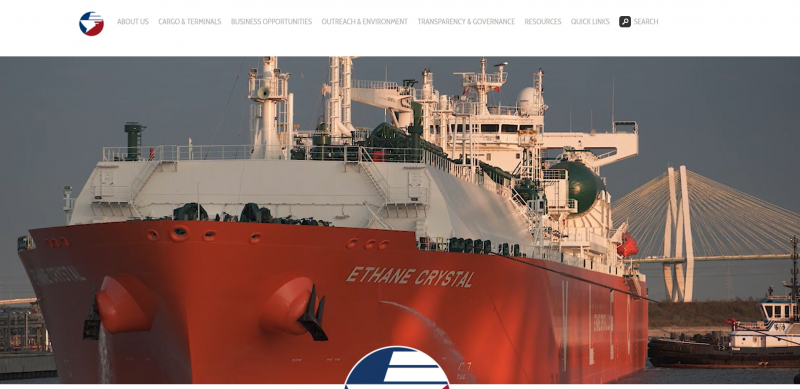
Port of Houston Website 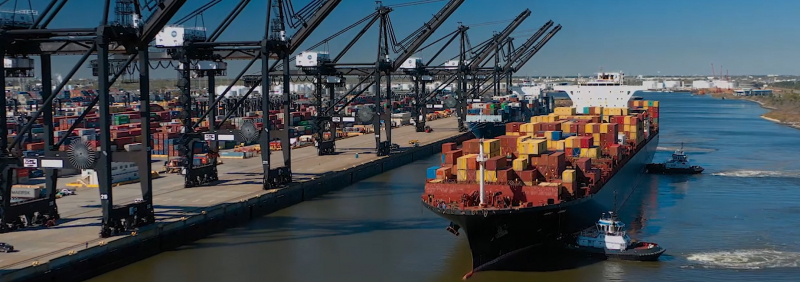
Port of Houston -
The Port of Charleston is a port located in South Carolina in the southeastern United States. Port facilities span three municipalities: Charleston, North Charleston, and Mount Pleasant, with six public terminals owned and operated by the South Carolina Port Authority (SCPA). The facility handles containers, automobiles and other rolling stock, non-container and project cargo, and Charleston cruise ships. Additional facilities at the port are privately operated and handle bulk cargo such as oil, coal and steel.
The ports of Georgetown and Charleston together form the South Carolina ports. The importance of the port to the economy of South Carolina can be gauged by the fact that it directly or indirectly provides 10 percent of all jobs in the state, that too, offering wages that are 32 percent higher than the state average.
Location: South Carolina
TEUs: 2.55 million
Manager & Operator: the South Carolina Ports Authority
Locode: USGGE, USCHS
Website: https://scspa.com/locations/port-of-georgetown/ , http://scspa.com/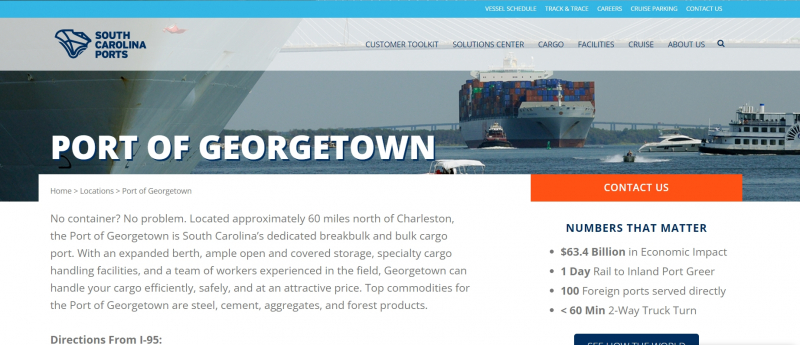
The ports of Georgetown Website 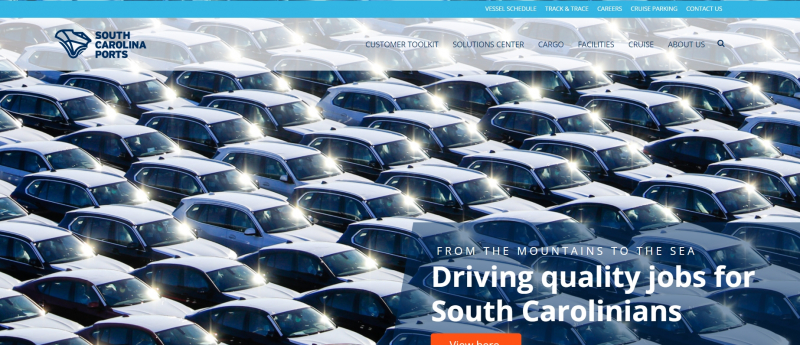
The Port of Charleston Website -
Port of Oakland is a large container ship located in Oakland, California, on the San Francisco Bay. It was the first major port on the Pacific coast of the United States to build a container ship terminal.
Port of Oakland is currently the fifth busiest container port in the United States after Long Beach, Los Angeles, Newark and Savannah. Development of the combined container handling system in 2002 culminated in more than a decade of planning and construction to produce a large-scale cargo facility that would allow the Port of Auckland to further expand its West Coast cargo market share.The port handles 99% of all container shipments through Northern California.
Location: Oakland, California
TEUs: 2.5 million
Owner: the City of Oakland
Locode: USOAK
Website: http://www.portofoakland.com/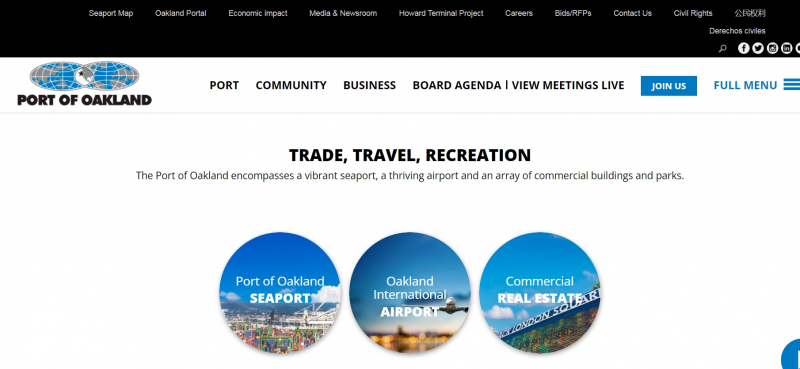
Port of Oakland Website 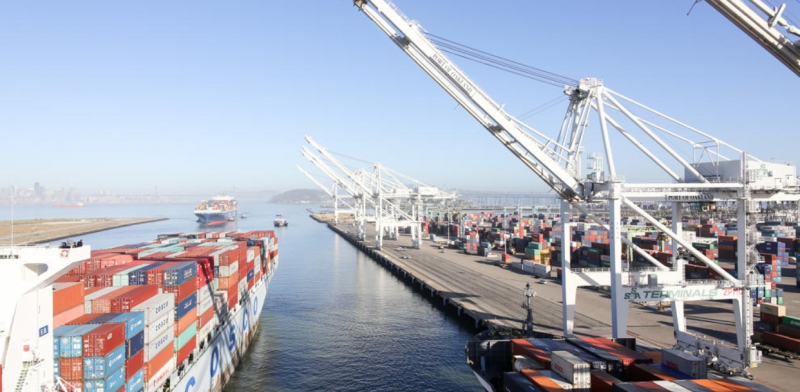
Port of Oakland -
Beaumont Port is a deep-sea port located in Beaumont, Texas, near the estuary of the Nechez River. It is the 4th busiest port in the United States according to the 2018 US Port Authority Rating by the American Association of Ports Authorities, and ranked by the American Association of World Ports Authorities.
Beaumont Port ranks 47th in the world in terms of tonnage. Port Rankings Report 2013. It is also the busiest naval port in the world for recycling US military equipment. The port serves as the headquarters of the US Army's 842nd Convoy, specializing in port logistics.
Location: Beaumont, Texas
TEUs: updating
Manager & Operator: Port of Beaumont Navigation
Locode: USBPT
Website: http://www.portofbeaumont.com/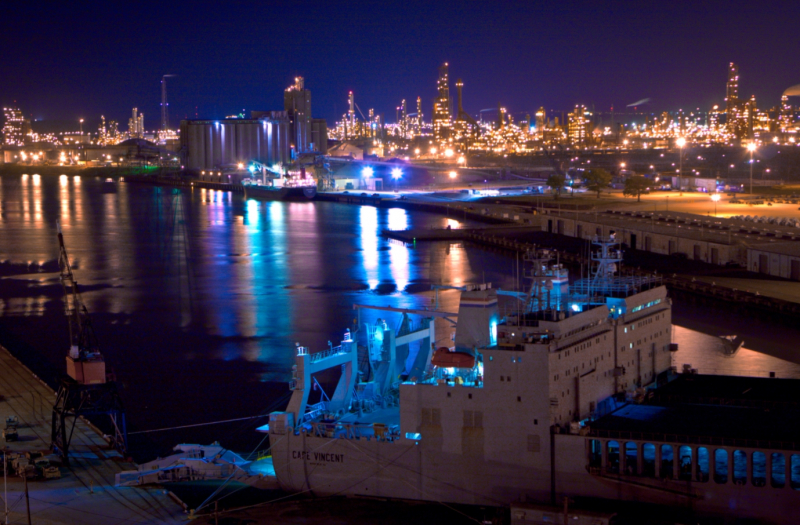
Port of Beaumont Website 
Port of Beaumont






























